Good morning, sweeties! Happy Valentine’s Day!
I really wanted to send everyone a big bunch of exuberant roses for Valentine’s Day today!
But since it’s also Ash Wednesday, I was thinking maybe it was a good opportunity to share some ecclesiastical embroidery with you.
Wonder of wonders! It just so happened to work out that I could do both.
So here are your roses and your ecclesiastical embroidery, all rolled into one neat package!
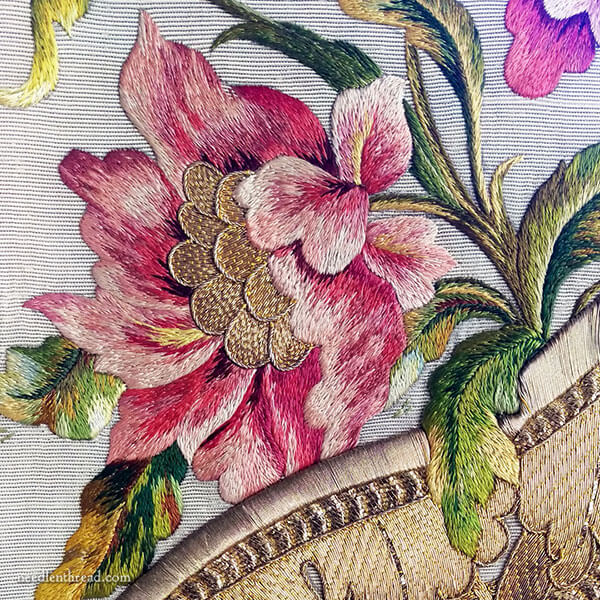
Needless to say, this is an old piece of ecclesiastical embroidery! They just don’t make them like this anymore. The embroidery on the vestment (the garb worn by a priest during the liturgy) is all worked by hand, and it is complete embroidery.
There’s no appliqué of fabric, there’s no paint over which some strokes of embroidery were added, in order to make it look like embroidery. No, no! On this piece, everything is totally embroidered, and it is embroidered with precision and skill.
These vestments come, absolutely, from the hands of masters of this type of embroidery.
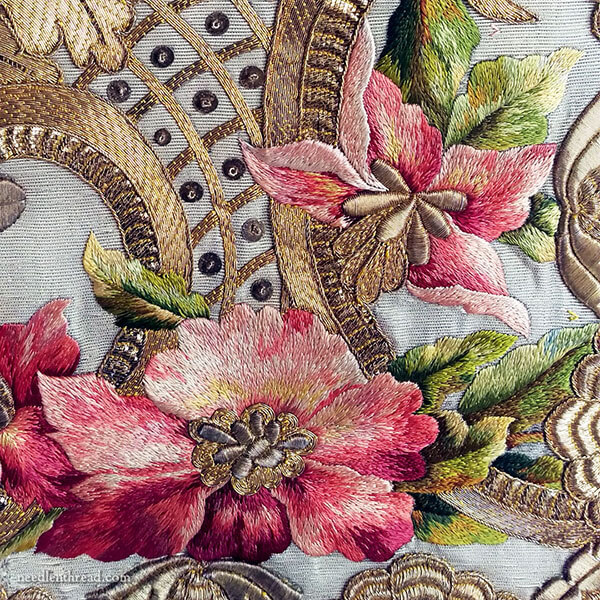
If I were trying to guess dates and provenances, by looking at the design, it would be hard to narrow down a date. The piece could be very, very old (late 1700’s / early 1800’s), moderately old (through the end of the 1800’s), or even relatively new (turn of the 20th century, at a stretch?).
They’re certainly European – I’m guessing they hail from either Spain, France, or Belgium.
They remind me of the embroidery done by the Visitation convents in France, which can still be seen at the Museum of the Visitation in Moulins. In fact, this is the cover of the book that I bought several years ago, cataloging the exhibits at the museum:
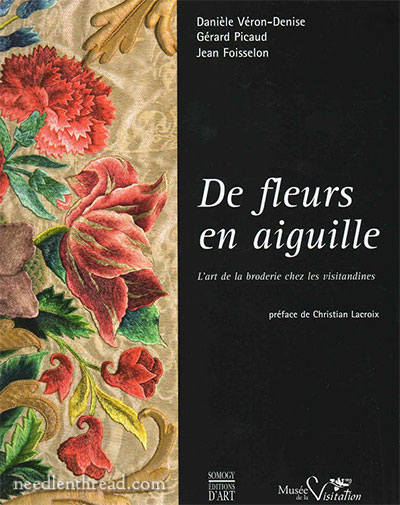
Within the book, there are many similar examples of exuberant florals on vestments, with goldwork. So…perhaps they hail from a Visitation convent.
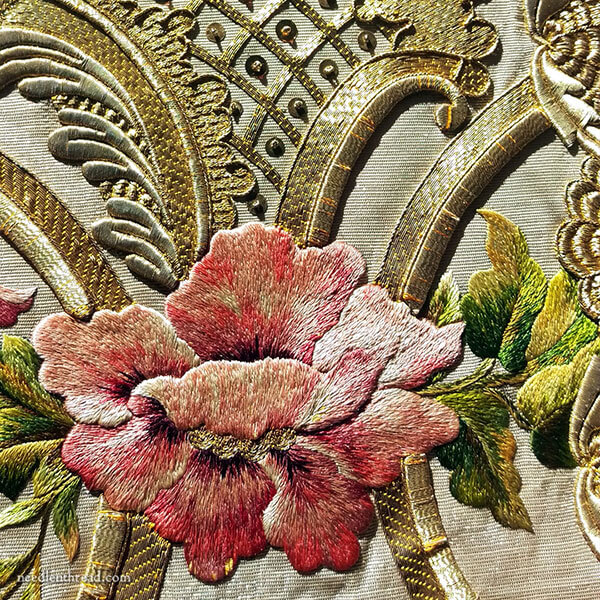
They’re in very good shape, though – not perfect shape, but good shape for their situation.
They’ve been carefully cared for, and they are still used, so I’d be more inclined to say they hail from a more recent era than from a more distant era.
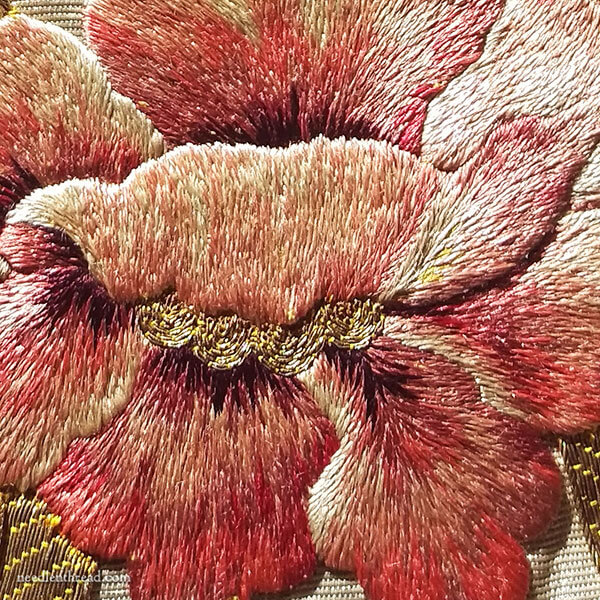
The silk shading is really exquisite. And the plethora of colors and shades of silk, among other things, indicates that this is no cheaply made vestment from a workhouse that cranked out ecclesiastical embellishments in assembly-line style, so that they could be appliquéd later onto the vestment ground fabric.
Rather, skilled embroiderers with access to a wide range of very good silk (it’s withstood the test of time amazingly!) sat down at a frame and worked individually on this piece of fabric, embroidering this design onto the ground fabric that makes the vestment.
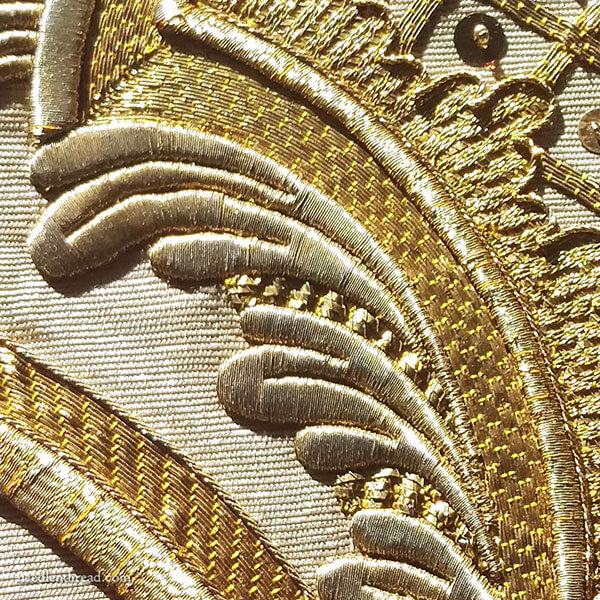
There is much intricate and exquisite goldwork, too, some over cards to give this really defined and chiseled look to the gold, some in regular laid work, some over string padding to give texture to the shapes (and to reflect the light), and lots of spangles (or paillettes), too – and, incredibly, very few are missing!
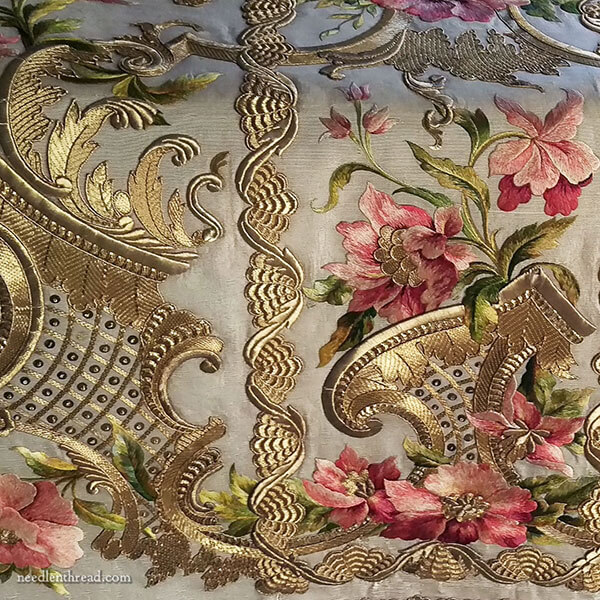
What a fabulous piece, don’t you think? Well cared for, still in use, and a clear tribute to the skill of embroidery artists in embroidery houses that produced exquisite pieces that could withstand the test of time so well.
Seeing pieces like this makes me wonder. I wonder about the hands that made it, the place it was made, the hearts of those who really put their heart and souls into this kind of art. The fact that it’s unsigned shows us that the glory wasn’t meant for them! I wonder about the threads they used – what did they feel like, how much brighter were they when this was new?
And then I wonder about this….
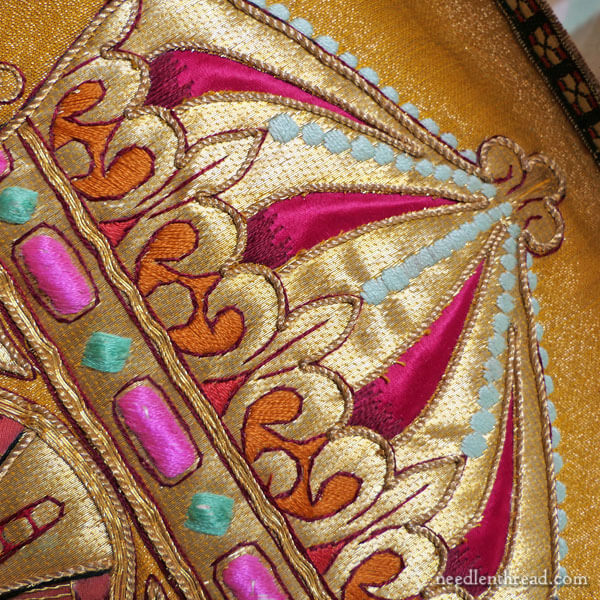
But this is a conversation for another day! It’s from a vestment that recently came my way, that has me befuddled and at the same time, amused.
I call it the circus vestment, though not with any disrespect towards its use. It’s just such a strange conglomeration of pieces and styles!
You can see here, though, the difference between a bespoke or commissioned piece (the rose vestment above was certainly a bespoke piece) and a vestment made through a workhouse, assembly line fashion.
And that, my friends, is your Valentine treat and an Ash Wednesday lesson in wonderment, all rolled into one.
Enjoy your day!